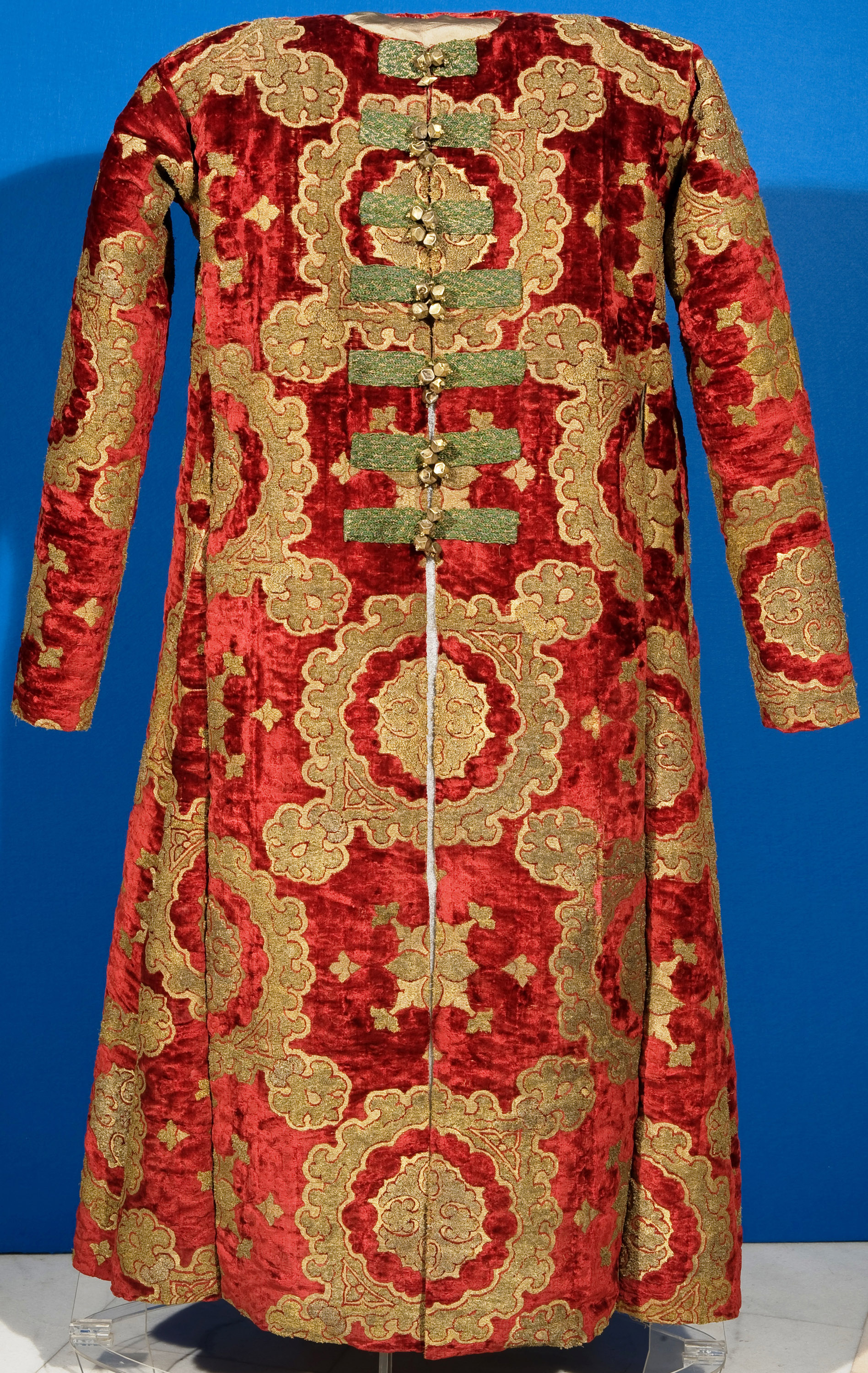The kaftan from the Bistriţa monastery is made of luxurious Italian brocade, the decorative patterns of which resemble embroidery but are the result of a special weaving technique. Museum inventories record a sumptuous grave cover, bestowed by the Craiovescu brothers to the monastery they founded around 1490. Closer inspection revealed the cover consisted of many smaller pieces cut for a kaftan, hence its restoration as a costume. The thick red velvet is decorated with vegetal motifs of Chinese origin which owe their relief to the employment of gilded silver thread. Both ornamental motifs and execution techniques are indicative of an Italian workshop, active around 1480-1490. Particularly expensive, their cost the equivalent of vast properties, such fabrics and the costumes made of them were an important statement of power and status.
The kaftan derives its form from the ancient Persian riding costume. The costume was later adopted by Byzantine officials, followed in their turn by high-ranking Ottoman officials. Boyars at the courts of Romanian princes also wore caftans as a sign of the office held.
As the Craiovescu brothers bestow the costly costume onto their foundation they followed a wider European practice among aristocrats, who donated rich costumes to be made into priestly vestments. Prince Neagoe Basarab, a blood-relative of the Craiovescu family, also donated a rich kaftan to the Bistrița monastery to be specifically turned into a reliquary cover.



